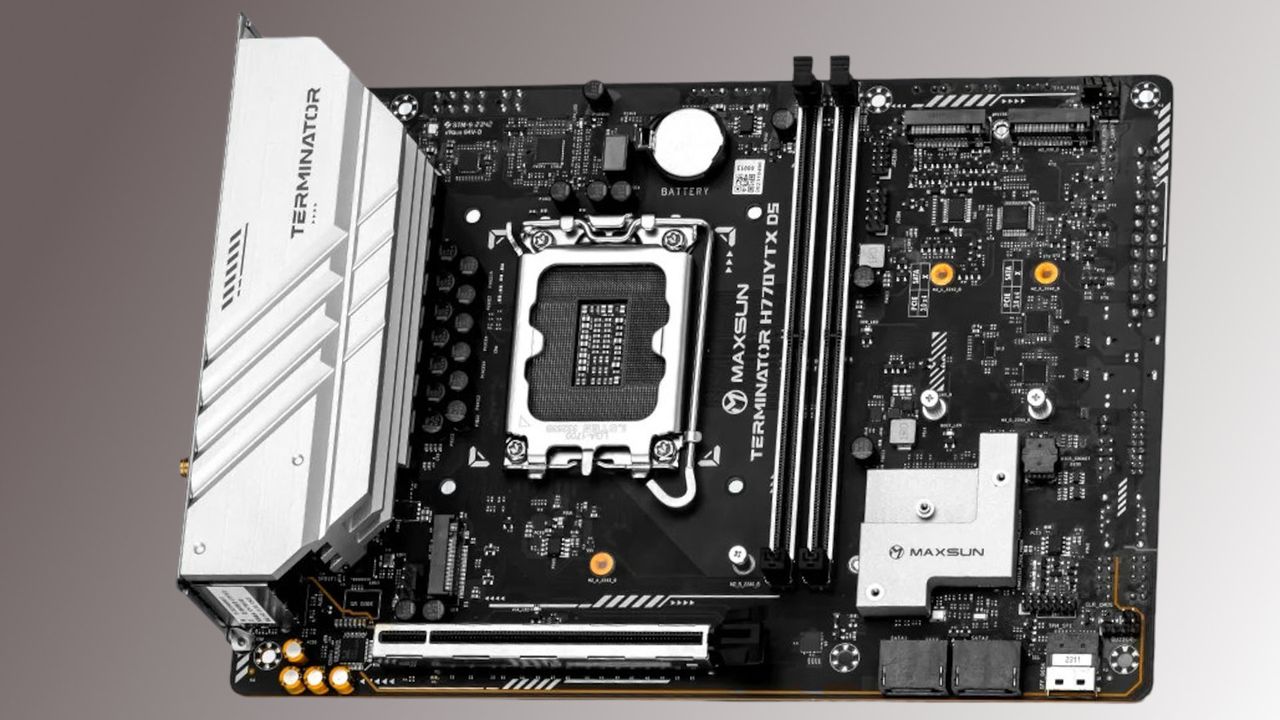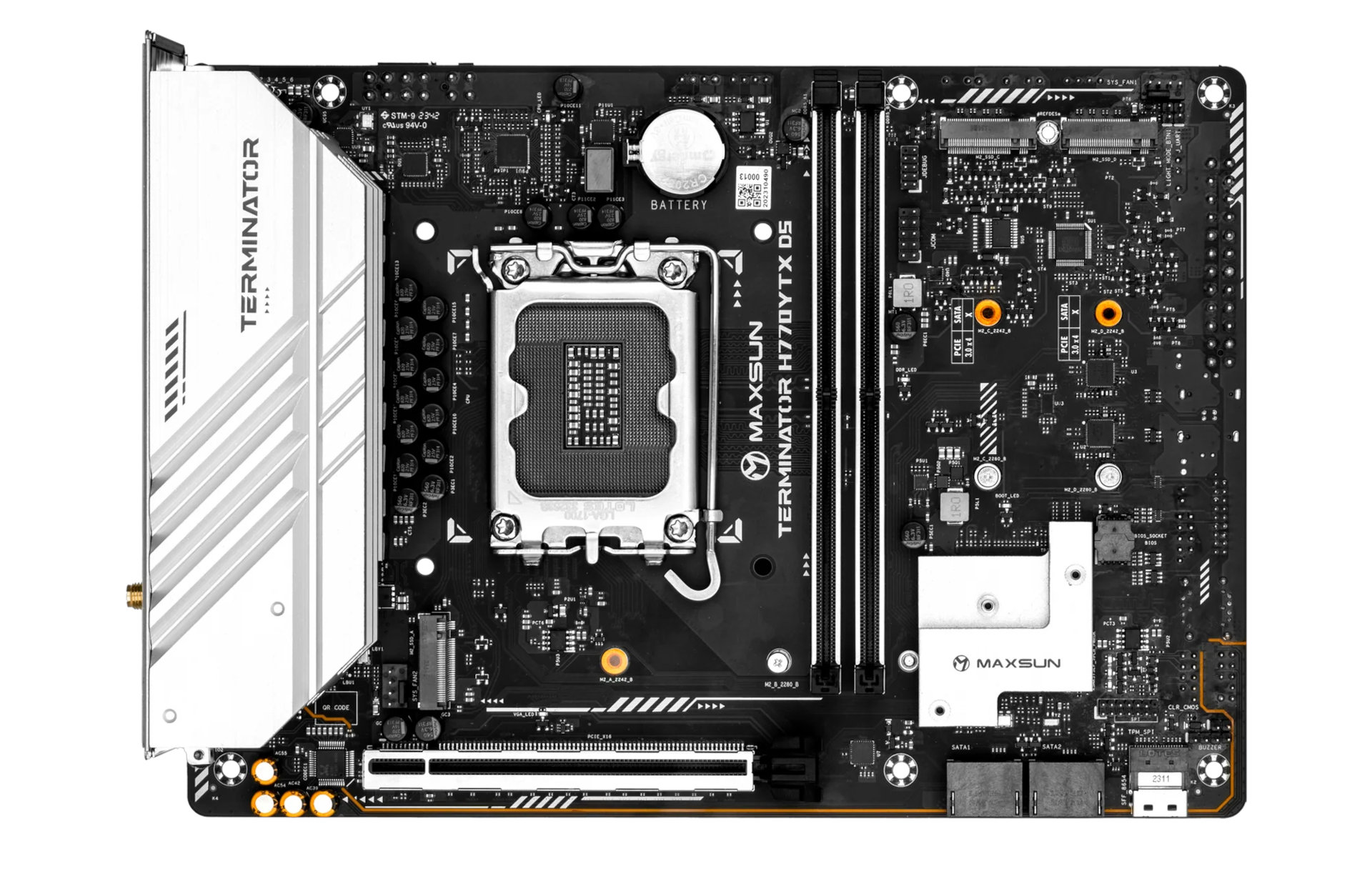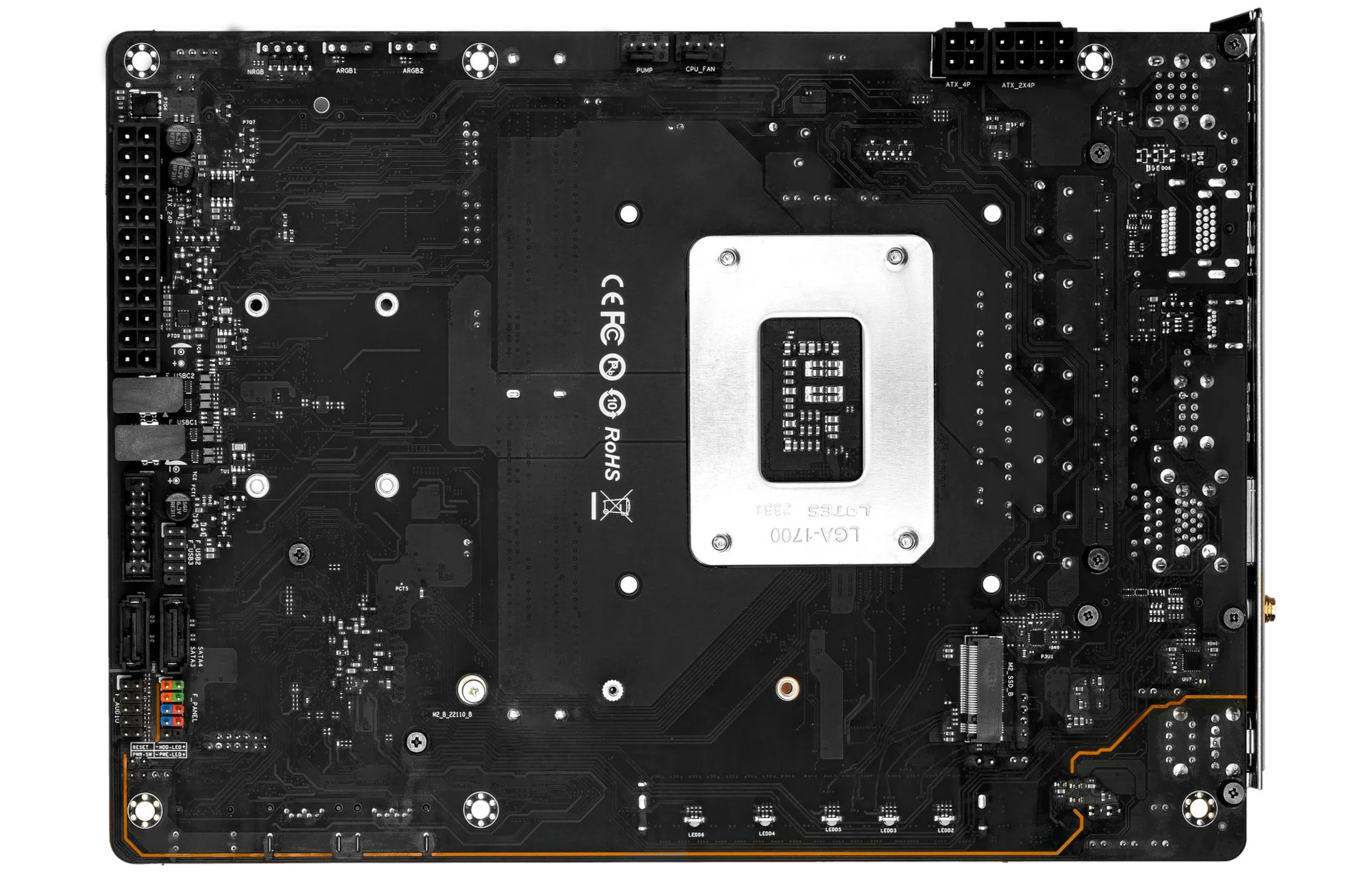
Innovation in the world of PC motherboards is surprisingly rare, as we've been using the same format, sockets, and connectors for a long time. Which is probably why one component maker has decided that a brand new design and format moniker is what's needed to shake things up a bit. The only problem is that the whole thing is all kinds of wrong.
"More than ITX, this is YTX." That's the marketing tagline by Maxsun for its new Terminator H770YTX D5 motherboard. Unfortunately, the tweet also says "Innovative motherborad solution" and you can already guess what memes have appeared in the comments to the post.
⚡More than ITX. This is YTX.Maxsun’s exclusive form factor brings:-A wider layout for optimized performance-3 additional M.2 slots for maximum storage-A unique back-plug design for a cleaner, more efficient buildIt’s not just a motherboard. It’s an innovation in form… pic.twitter.com/EXxpULZzaNSeptember 22, 2025
So, what exactly is this new-fangled YTX form factor? It's a board design that's the same width as mATX but the same height as ITX. Or if you prefer numbers, YTX is 245 x 175 mm, whereas mATX is typically 245 x 245 mm, with ITX usually being around 172 x 172 mm.
That's it, there's nothing else that's particularly revolutionary about the whole shebang. The problem is that it's not an evolution of any current design, either, as the total board area is 29% smaller than mATX, yet 45% larger than ITX. Worse still, due to its dimensions, it won't fit in any ITX-sized cases, just mATX ones or larger.
Maxsun claims that its YTX form factor is "space-efficient…without compromising performance," but so what? The design provides room for two additional M.2 slots compared to all the ITX boards I've seen, but that's it. If you must have four SSDs, then just get an mATX board with three slots and use an M.2 PCIe adapter for the final one.


So you're not getting the benefits of ITX's compactness, nor the increased space for connectivity options offered by the larger area of mATX. Which all seems a bit silly. Sure, it comes with a decent number of M.2 slots for SSDs, but there's only one PCI Express slot.
For reasons that I can't quite fathom at the moment, Maxsun has also chosen to use Intel's H770 chipset in this odd mobo design. If you've never heard of it, I wouldn't be surprised, as it's the forgotten cousin that sits between the range-topping Z790 and the mainstream B760 chipsets for 12th/13th/14th Gen Core processors.
The few H770 motherboards that you can find in stores aren't any cheaper than decent Z790 ones, so you might as well just buy one of them. For example, the Asus Prime H770-Plus D4 is $350 at Newegg, whereas the Gigabyte Z790M Aorus Elite AX Ice is $258 at Newegg. The latter is also an mATX board, with two PCIe and three M.2 slots.
Coming back to the Maxsun YTX, the one thing that it does have going for it is that it's a 'rear-plug' layout, i.e. all the power, fan, and header connectors are on the back of the board. I've built a PC using such a format in the past, and it is a great way of making the inside of your gaming PC look really clean and tidy. However, it's not enough to make me choose the YTX over any other mATX or ITX Z790/B760 motherboard.
I have a lot of respect for Maxsun trying to do something new in the motherboard world, but taking a hacksaw to an mATX PCB and sticking M.2 slots in a funky position isn't going to turn the industry upside-down. Top marks for giving it a go, some marks for effort, and zero marks for the end product.







